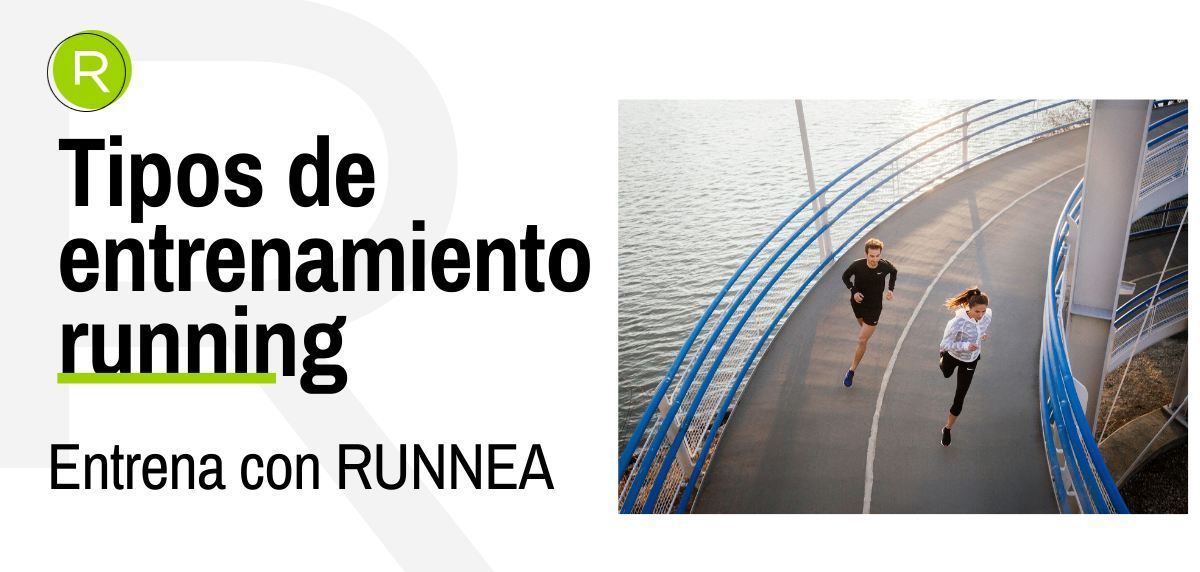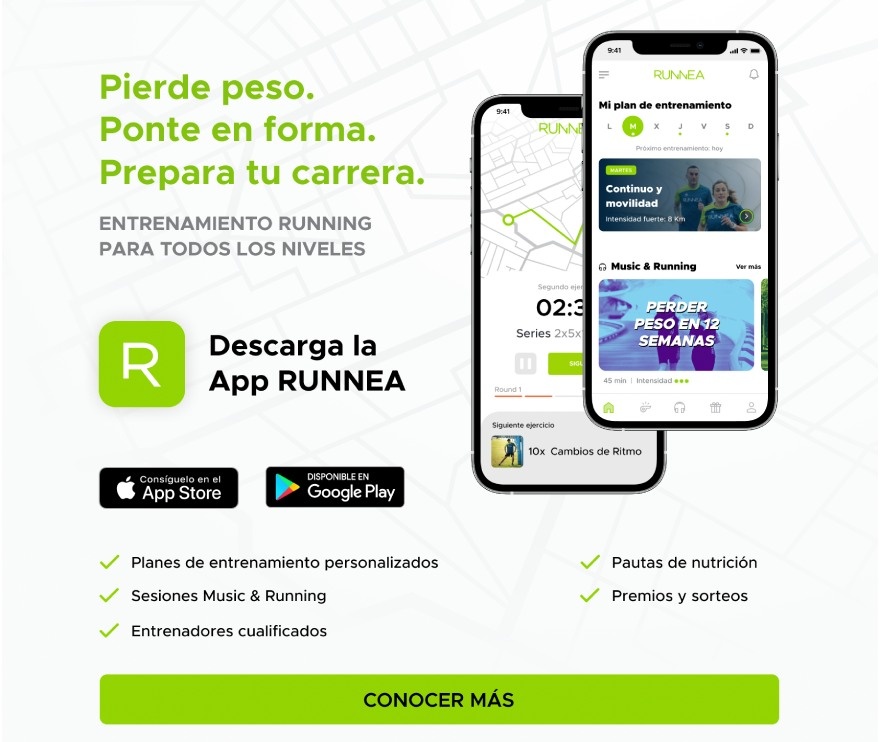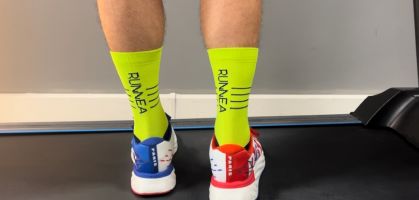There are three things you need to know if you want to improve your running performance. To improve in running you need the right balance between volume, intensity and rest. And this is the "magic formula" for achieving ideal fitness. It sounds simple in theory, but obviously it's not. And why isn't it? Because we tend to underestimate what running is all about. We tend to think that it's enough to put on a pair of running shoes, shorts and a T-shirt. The consequence most of the time, injuries, overtraining, frustration, demotivation? The individualization of training is the only way to combine the 3 premises and achieve adequate results at a higher speed and in a safer way (without injuries or other scares associated with overtraining).
The importance of training variety
So you may be wondering... What types of running workouts should you be doing in your different weekly sessions? Pay attention because what we are going to tell you in the next few lines is important and can help you understand why, whatever your starting level, you need an individualized running training plan (even if you don't have a goal linked to a race). Whether you are running to stay fit, clear your head or lose weight).
The variety of exercises during training is one of the keys that will help you to be a more complete runner, since taking a step further, and go beyond the continuous race itself, accumulate volume of kilometers at different intensities, will help you along with other sections as important in your set-up as it is working strength, speed and of course, endurance. A well-planned training will even become an effective method of injury prevention in the medium/long term. But all this work, this calculation of the right volume and intensity cannot be done randomly.
Running without personalized planning is like driving to an unknown place without GPS and without knowing the state of the car during the trip.
If we look at professional athletes, and apart from the "controversial" Running shoes they use or not use, the case of the great Eliud Kipchoge, is one of the best references to follow, because the first athlete to break the two-hour barrier in running a marathon, has as one of its keys to success the variety of training in their individualized preparation plans.

What types of running training are there and what are they for?
Your own training as a runner, who seeks to make progress in each training session to achieve your goals, is all about knowing the different types of training that exist when training to improve your running ability and how to incorporate them into your regular running routine.
We have to think that the generic training plans that we find on websites or magazines are elaborated with the initial idea that all people are the same, with the same capacity, the same recovery time, the same physical capacity, the same time to train .... And as you well know, this is not true and puts the health of the athlete at risk.
But before anything else, and before you take action, it is worth pointing out a detail, and that serves to solve one of the most common mistakes we often make popular runners, as is the fact of "not choosing well a personalized and individualized training plan. This usually happens when we look for training plans on the web or magazines, where more and more plans are offered: how to prepare your first 5k, how to finish your first marathon.... This does not mean that the planning does not help us to achieve the proposed goal, but we have to think that such plans are made with the initial idea that all people are equal, with the same capacity, the same recovery time, the same physical capacity, the same time to train ... And as you well know, this is not true. Each person is different and each one needs a totally individualized plan," says Lander Azpiazu, running coach at RUNNEA and a graduate in Physical Activity and Sports Science.
That said, the glossary of the different types of training and how to incorporate them into your personalized training plan is as follows:
Long Run or long runs
The Anglo-Saxon term comes to mean "long distance", and is undoubtedly one of the most popular, and one that a large group of athletes are more accustomed to carry out. There is not much secret contained in this type of running training, since it is about accumulating a greater volume of mileage, and generally, they are usually developed at rather calm rhythms.
The main mission of this type of Long Run training is focused on improving our muscular endurance, as well as strengthening the mental aspect that prepares us for our long runs. It is important to adjust the distance or duration of the same, since it is not the same to participate in a half marathon (21k) or in a marathon (42k). As a general rule we should approach the distance in a ratio of 2, that is, a training of 28-30k would be adequate to prepare for a marathon. We are not going to have a better performance just because we do a longer distance in our sessions, so we must be cautious and not abuse these long runs," emphasizes our head coach Lander Azpiazu.
- Recommended frequency: Once a week.

Base Run or base training
Also known as "base training. The mileage range is medium, and is performed at more comfortable paces. But keep in mind that this type of training is the basis for building your aerobic efficiency, strengthening your musculoskeletal system, increasing the endurance of your muscle fibers, and will even help you become a more efficient runner, because you will learn to burn more fat and save your glycogen stores, one of our essential fuels to perform better and better.
- Recommended frequency: 2 to 3 times per week.
Interval runs and/or Fartleks
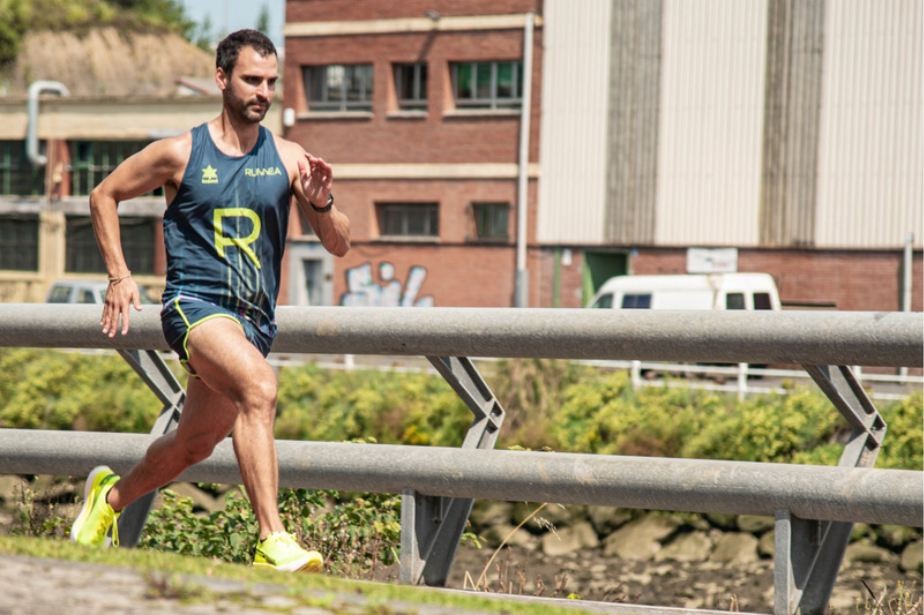
We are talking about short and explosive series, in which we alternate short distances at high intensities, and also including limited recovery times. The idea is to improve endurance, on the one hand, but also to increase speed to become a faster runner, on the other hand.
Lander Azpiazu makes it very clear and explained: "The series or fartleks will allow us to improve our effort thresholds, being able, in the long run, to be faster and tolerate intense efforts in a better way, vital for our future competitions". In this sense, there is no doubt that "the duration, distance, intensity and recovery time of these sessions should be determined by a qualified and expert trainer," says Azpiazu.
- Recommended frequency: 1 to 2 times a week.
Tempo Run or tempo running workouts
Referred to as tempo run workouts, this type of Tempo Run training is based on medium-distance sessions, which are performed at more demanding intensities with faster paces. They can take us to the range of 85% of our maximum effort capacity.
In this way we are able to work and develop the endurance and strength necessary to be able to run faster for more kilometers and longer. So the mission of this type of training is to "simulate real running conditions, and it will be of great importance for our body to assimilate the effort when fatigue sets in. Experts indicate that they are very important for long distances, but not so much for shorter distances," stresses our particular running coach.
- Recommended frequency: 1 to 2 times a week.

Recovery runs
Recovery run, as their name suggests, are designed for recovery after a tough and demanding workout, or for the days following a highly muscular competition, such as running a marathon, for example.
The ideal way to approach this type of training is to program short-distance sessions, of low and bearable intensity, and which allow the body to recover quickly while continuing to accumulate kilometers in the legs.
As Lander Azpiazu, one of our coaches at RUNNEA, points out, there is some controversy about recovery races, but what has been proven is that this type of race "is an indispensable tool for our physical regeneration, both at a muscular and physiological level. On the one hand, it helps us to assimilate the load and stress received in training sessions and, on the other hand, it is a very effective measure to accelerate recovery after demanding workouts or races". By the way: "Beware of wanting to run faster or to get into a fight with a colleague in this type of session, we must keep a cool head and stick to the stipulated pace or intensity. There will be time to run fast and long!", Good point, Lander, yes, sir!
- Recommended frequency: As needed
Rest is also training
Last but not least.... Don't forget to rest between training sessions, it's essential! Remember and keep in mind that all these types of training that we have told you: "will not serve any purpose, nor will be fruitful without adequate rest. Sleep and rest are as important or more important than the training itself. It is in these moments when the body assimilates all the load received and when improvements are experienced at a physical level," says Lander Azpiazu.
We hope we have helped you understand that personalized training is the best option for effective and safe running.
Why do we recommend training with RUNNEA?
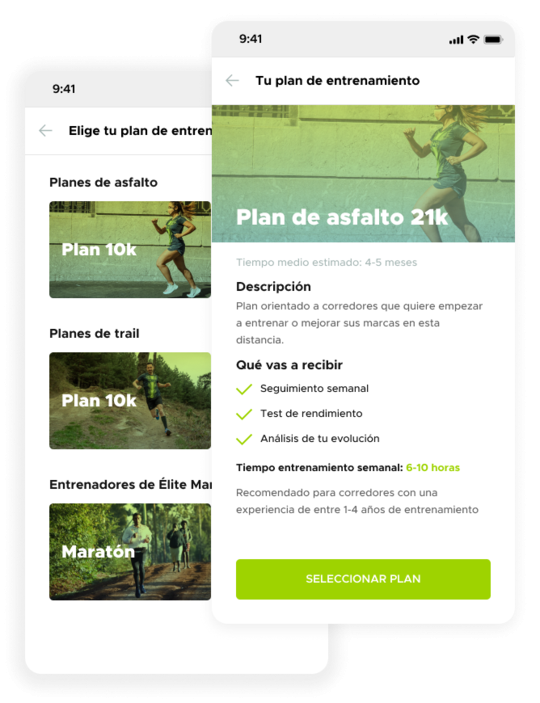
Personalized training with RUNNEA is one of the options you have to start running based on your training, your goals and your initial fitness level. In the market you will find a multitude of options that can help you improve as a runner, but we would like to introduce you to what makes us different and why RUNNEA has become the leading training method in Spain with more than 100,000 people who have already trained with us and with the confidence of races such as the Valencia Marathon, the Behobia San Sebastian or the Madrid Half Marathon among many others.
Our differentiation
RUNNEA is formed by a team of doctors in physical activity and sport sciences, computer engineers and data engineers. Our differentiation, the sum of the knowledge of qualified coaches with artificial intelligence algorithms to individualize each training session. While the ability of a person to elaborate a training plan based on the data collected from each training is limited (a coach can objectively and satisfactorily train no more than 10 people simultaneously), our technology helps the coach to automate the entire process of collecting data from each training session. We interpret that data and propose the rhythms, intensities and exercises that will help each athlete to a continuous improvement, minimizing the risk of injury and maximizing their effectiveness. That is why 90% of our athletes achieve their goals.
Technology
Our technology is validated by top level coaches and athletes: Arturo Casado (European 10.000 m. Champion and Doctor in Physical Activity and Sport Sciences), Martín Fiz (World Marathon Champion), José Garay (National Athletics and Valencia Marathon Coach), Marc Roig (Athlete, coach and physiotherapist of the NN Team, Eliud Kipchoge's team)...
Competitive pricing
The use of technology helps us to reduce costs and offer individualized training of the highest quality at a very reasonable price in order to reach as many runners as possible and not only be a product accessible to a minority who can afford it.
Read more news about: Running Training
